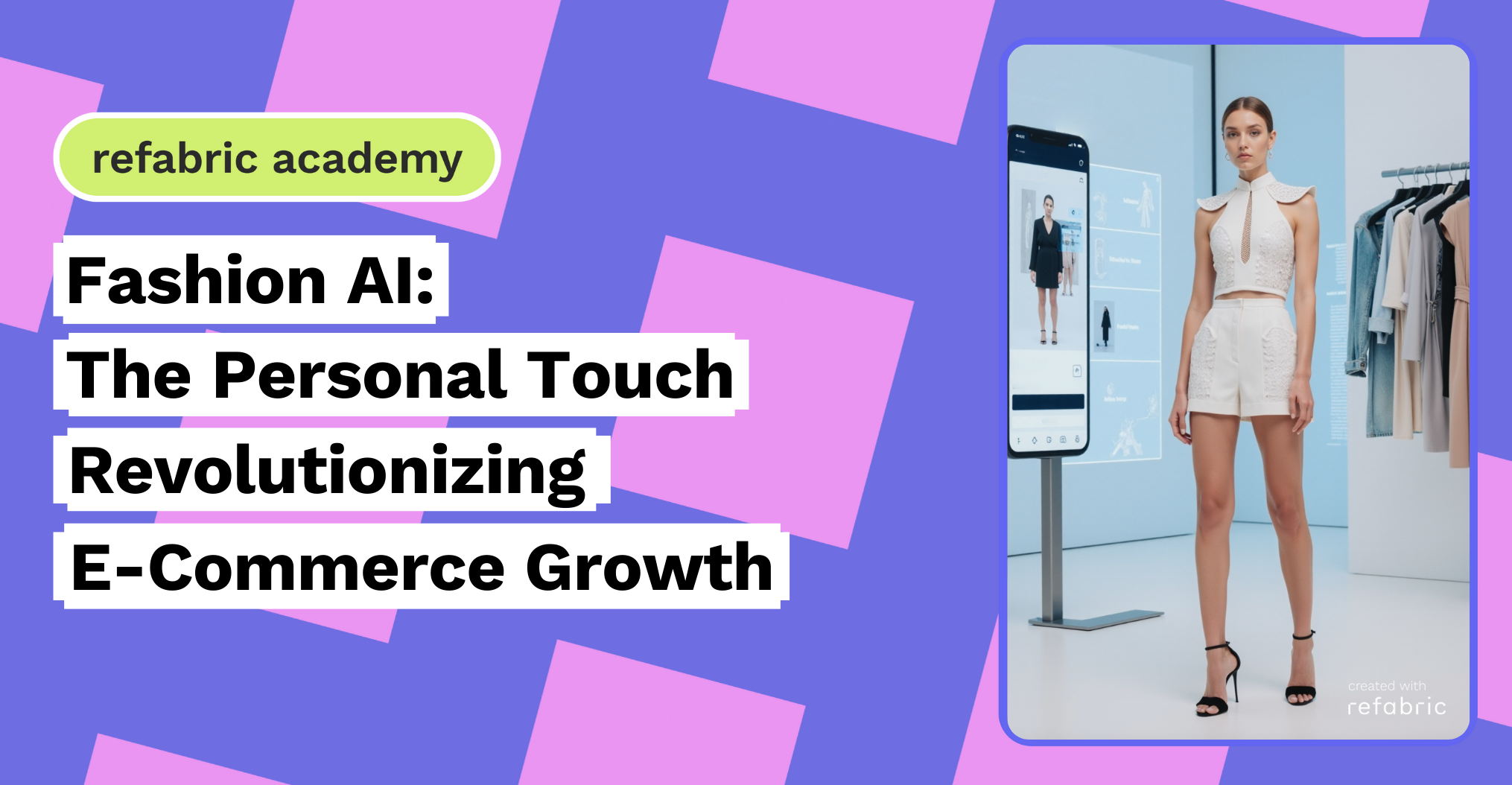Fashion AI has revolutionized e-commerce, transforming it from a basic online shopping platform to a sophisticated, personalized experience. What used to be a one-size-fits-all approach has evolved into a curated journey for every shopper. By 2027, fashion e-commerce is projected to surpass $1.2 trillion in market size, and it’s no exaggeration to say that fashion AI is one of the key forces fueling this meteoric rise.
AI in fashion e-commerce is doing more than just streamlining operations; it’s reimagining how consumers shop. From personalized recommendations to AI chatbots ready to answer your most specific style queries, artificial intelligence is transforming the customer experience and setting new standards for online fashion retail. According to McKinsey, AI could contribute between $2.6 and $4.4 trillion annually to the global economy—a significant chunk of that coming from e-commerce.
But if you think the advancements in fashion e-commerce today are impressive, they’re only the beginning. Let’s delve into the transformative ways fashion AI is revolutionizing online shopping and how it’s shaping the future of fashion.
Personalized Shopping at Scale
One of the most revolutionary aspects of fashion AI is its ability to tailor the shopping experience for every individual. AI algorithms analyze user data—ranging from purchase history and browsing habits to social media activity and even body measurements—to curate a selection of items that feel uniquely tailored to each shopper.
Take, for example, virtual stylists powered by AI. These digital tools not only suggest outfits but also consider personal preferences like color palettes, favorite brands, and even occasion-specific needs. The result? A curated shopping experience that feels like a one-on-one interaction with a professional stylist, all from the comfort of your home.
This level of personalization isn’t just a convenience for shoppers—it’s a goldmine for retailers. By recommending items customers are more likely to buy, fashion AI increases conversion rates and drives customer loyalty, creating a win-win scenario for both sides.
The Rise of AI-Powered Chatbots
Gone are the days when customer support in fashion e-commerce was limited to generic FAQ pages or endless hold times. AI-powered chatbots are now stepping in to provide instant, personalized assistance 24/7.
Whether you’re asking about sizing, looking for styling advice, or tracking a package, these chatbots can deliver real-time answers with incredible accuracy. Many advanced chatbots even use natural language processing (NLP) to understand and respond to complex queries in a conversational tone, making the experience feel less robotic and more human.
For retailers, this technology reduces operational costs while significantly improving customer satisfaction. Shoppers, on the other hand, enjoy a seamless and efficient experience that encourages repeat visits.
Virtual Try-Ons and Augmented Reality
One of the biggest challenges in fashion e-commerce has always been the inability to try before you buy. Fashion AI has tackled this problem head-on with the integration of virtual try-on tools and augmented reality (AR).
Using AI-powered virtual try-on technology, shoppers can see how a dress fits their body or how a pair of sunglasses looks on their face—all in real time. Some platforms even allow customers to upload their photos or use live camera feeds to achieve a hyper-personalized fitting experience.
This innovation doesn’t just reduce returns—a costly problem for e-commerce—it also builds shopper confidence and satisfaction, driving more purchases and fewer hesitations.
Efficient Inventory Management and Sustainability
Behind the scenes, fashion AI is optimizing inventory management in ways that were previously unimaginable. AI-driven systems can predict trends, manage stock levels, and even automate reordering processes to ensure that popular items are always available.
But perhaps more importantly, fashion AI is playing a pivotal role in making fashion e-commerce more sustainable. By analyzing demand patterns, it minimizes overproduction—a major contributor to fashion waste. This shift aligns with the growing consumer demand for eco-conscious brands and practices, making sustainability a competitive advantage in the industry.
What’s Next for Fashion AI?
While current applications of fashion AI are already game-changing, the technology is still in its infancy. Future innovations are likely to include even more advanced virtual shopping assistants, AI-generated designs tailored to individual customers, and deeper integrations with metaverse shopping experiences.
Additionally, as fashion AI becomes more accessible, smaller and niche fashion brands will be able to compete on a level playing field with global giants, offering personalized experiences that were once exclusive to industry leaders.
Fashion AI is the behind-the-scenes powerhouse transforming e-commerce from a functional marketplace into a personalized, immersive experience. By leveraging data, AI creates a shopping journey that feels as unique as the individual behind the screen.
As fashion e-commerce continues to grow toward its $1.2 trillion potential, fashion AI will undoubtedly remain at the forefront of this evolution. Whether it’s through virtual try-ons, chatbots, or personalized recommendations, one thing is clear: the future of online shopping is intelligent, personalized, and limitless.
